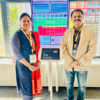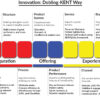
In 2023, a Nature investigation found that over 10,000 research papers had been retracted globally. This record breaking figure can’t be an indicative one for occasional mistakes or sporadic lapses in judgment but one that signifies a systemic fault. Central to this fault is the industrialisation of scholarly fraud by so-called “paper mill” organically structured factories that create fake research for sale. Facilitated by artificial intelligence, paper mill factories can create phony text that embeds stilted “tortured phrases” that replicate legitimate science prose that often passes under common editorial screening undetected.
The implications of this trend are serious. In the words of Proceedings of the National Academy of Sciences (PNAS), paper mills have discovered how to abuse flaws in editorial review systems, drowning filters by scale. A investigation by Bioengineered noted that in certain intervals up to 25 to 30 percent of published articles showed evidence of faked or replicated data. The harm goes far beyond first publication. A JAMA Network Open investigation found that years after retraction fraudulent papers were still being cited in systematic reviews, polluting the evidence base in fields as important as oncology. The BMJ has also pointed out common patterns in such papers that might act as red flags but often slip past overtaxed editorial teams.
It does so because science is an accumulation: later research stands on the shoulders of previous discoveries, and when fraudulently or doctored work enters the literature, it leads astray entire fields. In medicine, distortions can influence clinical guidelines, direct therapeutic trials astray, and eventually cause injury to patients. In the words of the Indian scientist C.N.R. Rao once: “Science is based on truth. If you compromise on truth, you compromise on the very foundation of progress.” The crisis running its course proves that the trust that forms the basis of the scientific enterprise is weak, once damaged often irreparably so.
In an Indian context, the dilemma is further fuelled by structural exigencies in academia. India has recently become the third-largest publisher of research papers, yet the increase was fuelled by the “publish or perish” ethos tied to promotions, accreditations, and institutional rankings. Professors in medicine colleges, in particular, were often judged by quantities rather than qualities published. This provided fertile ground on which predatory journals and paper mills could flourish. The University Grants Commission had to step in by promulgating the UGC-CARE list as a means of demarcating legitimate fora for scholarship. Nevertheless, the dilemma lingers on. In the words of Dr. Soumya Swaminathan, former World Health Organization Chief Scientist, “We need to complement quantity by quality. Otherwise, the trust deficit increases and our science gains no credibility elsewhere in the word.”
The global scene is no less alarming. Ivan Oransky, co-founder of Retraction Watch, described the paper mill explosion as an “existential threat to the scientific enterprise.” Governments have started reacting, with China, previously berated for rewarding publication counts, now cracking down strongly on misconduct. North American and European publishers, such as Elsevier and Springer, have adopted AI-driven fraud detection software, but these are yet unable to keep up with more advanced forgeries. Richard Horton, editor of The Lancet, has sounded a warning for the much larger implications it has set in motion: “We live in a reproducibility crisis. Integrity of the published record is not just a matter of honesty; it’s a matter of survival of the very construct of science as a public good”
There are encouraging omen in terms of upped vigilance and alertness. The record retractions in 2023, however disturbing, also show that detection mechanisms are on the improve. Editorial boards cooperate more closely with institutional bodies like the Committee on Publication Ethics (COPE), national regulators have started establishing more robust norms, and meanwhile new tools for image duplication detection, data fiddling detection, as well as linguistic anomaly detection, are being introduced across publishing houses. Awareness drives in the public space are painfully taking the debate out of the closed circles of academia into the wider public as well as policymaker space.
Nevertheless, the response has its constraints. Retractions arrive too late to stop the dissemination of inaccurate information, and falsified papers remain cited long after they are retracted. In a few instances, legitimate mistakes get entangled with misconduct, prejudicing reputations unduly. Investigators working under low-resource settings necessarily experience enhanced suspicion, despite legitimate work that they do, exacerbating inequalities in the international research system. Paper mills rapidly evolve an ability that keeps pace with advances in detection tools, meanwhile developing an arms race between fraud authors and gatekeepers. These instances of damage are a sobering warning. In cancer medicine, false studies have diverted clinical research, slowing effective treatments. In the pandemic phase of COVID-19, ill-tested and sometimes falsified studies—like hydroxychloroquine studies—propagated speedily, marring clinical decision-making and injuring credibility with the public.
In India, several retractions across pharmacology and medical journals have thrown long shadows over institutional credibility, challenging skepticism over protection systems. Combating the issue needs a multi-faceted approach. Peer review needs fortification with multi-strata, blinded, cross-institutional systems that reduce chances of editorial capture. More transparency is the need of the hour, where journals insist on deposition of raw data and checks on reproductions. Cultural shifts are required where we wean away from quantity-oriented measures for promotions as well as fund allocation, moving instead towards quality, reproducibility, and social impact. Artificial intelligence, guilty more often than not of churning out fake material, can be put to use for positive ends by flagging tortured syntax, cross-verifying citations, as well as finding unlikely results. And then there must be collaborative global action. Paper mills don’t respect borders, neither do they ought we restrict the methods we adopt towards combating them. Shared blacklists of fraudsters in action, collaborative action by publishers, as well as robust protections for whistle-blowers can do a lot towards regaining confidence.
The 2023 retraction crisis then is not merely a statistical fluke but a wake-up call. It shows that the science community needs to reexamine its system, its incentives, its protections. Jiddu Krishnamurti once noted as an Indian philosopher that “It is no measure of health to be well adjusted to a profoundly sick society.” Should science continue as the most trusted truth-seeking enterprise then it needs to address its own sickness. That entails upholding rigor, fostering honesty, and eschewing shortcuts even when shortcuts truly tempt. Combating paper mill science is not merely a matter of sprucing up a journal; it’s a matter of safeguarding the very essence of science.
Dr. Prahlada N.B
MBBS (JJMMC), MS (PGIMER, Chandigarh).
MBA in Healthcare & Hospital Management (BITS, Pilani),
Postgraduate Certificate in Technology Leadership and Innovation (MIT, USA)
Executive Programme in Strategic Management (IIM, Lucknow)
Senior Management Programme in Healthcare Management (IIM, Kozhikode)
Advanced Certificate in AI for Digital Health and Imaging Program (IISc, Bengaluru).
Senior Professor and former Head,
Department of ENT-Head & Neck Surgery, Skull Base Surgery, Cochlear Implant Surgery.
Basaveshwara Medical College & Hospital, Chitradurga, Karnataka, India.
My Vision: I don’t want to be a genius. I want to be a person with a bundle of experience.
My Mission: Help others achieve their life’s objectives in my presence or absence!
My Values: Creating value for others.
Leave a reply
















Dear Dr. Prahlada N.B Sir,
The "paper mill explosion" in science research is like a cancer that threatens to undermine the very foundation of scientific progress. Just as a single faulty brick can compromise the integrity of a building, a single fraudulent study can have far-reaching consequences, influencing clinical guidelines, diverting research efforts, and ultimately harming patients.
The emphasis on "quality over quantity" is a crucial one. It's like the difference between a master craftsman who meticulously shapes each piece of furniture and a factory that churns out mass-produced items without attention to detail. While quantity might impress at first glance, it's the quality that truly stands the test of time.
In the words of Dr. Soumya Swaminathan, "We need to complement quantity by quality. Otherwise, the trust deficit increases and our science gains no credibility elsewhere in the world." This resonates deeply, especially in the context of India's growing presence in scientific publishing.
To combat this issue, we need a multi-faceted approach that includes:
– *Strengthening Peer Review*: Implementing multi-strata, blinded, cross-institutional systems to reduce chances of editorial capture.
– *Promoting Transparency*: Insisting on deposition of raw data and checks on reproductions to ensure reproducibility.
– *Cultural Shifts*: Moving away from quantity-oriented measures for promotions and fund allocation, focusing instead on quality, reproducibility, and social impact.
– *Collaborative Global Action*: Sharing blacklists of fraudsters, collaborative action by publishers, and robust protections for whistle-blowers to regain confidence.
By prioritizing quality and integrity, we can ensure that science continues to be a trusted truth-seeking enterprise that benefits humanity.
Reply